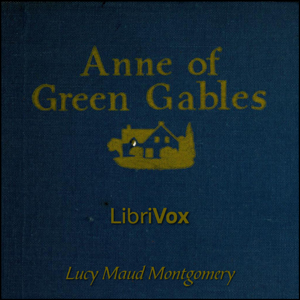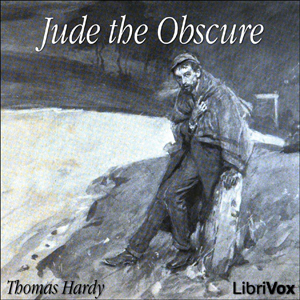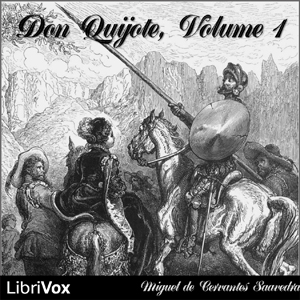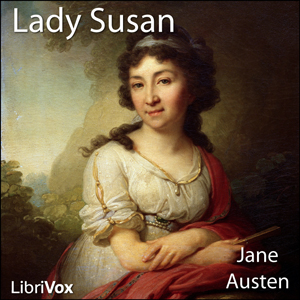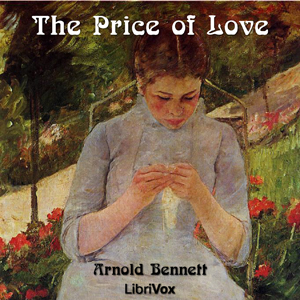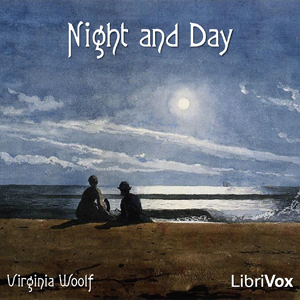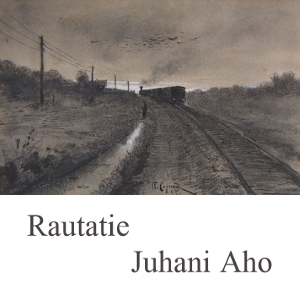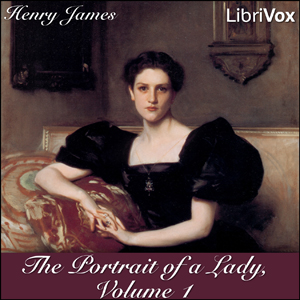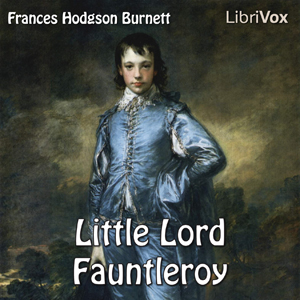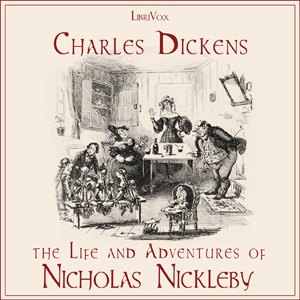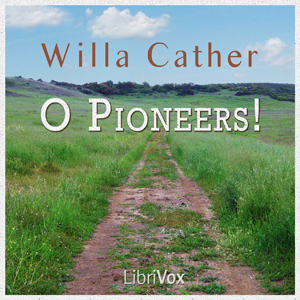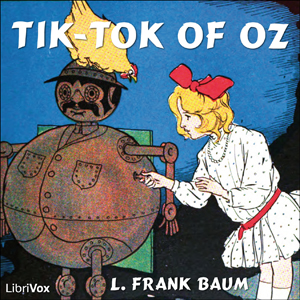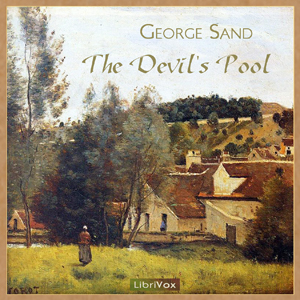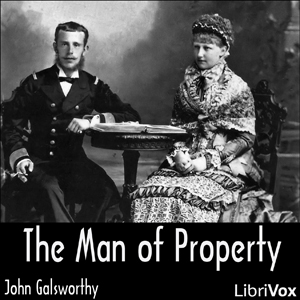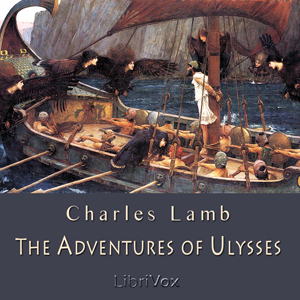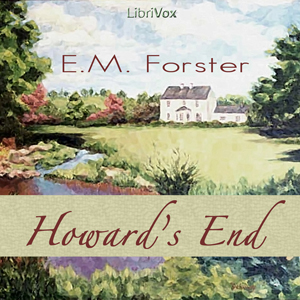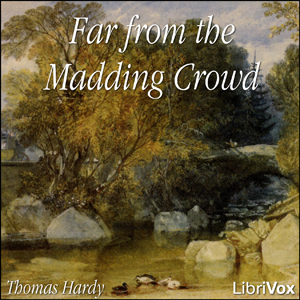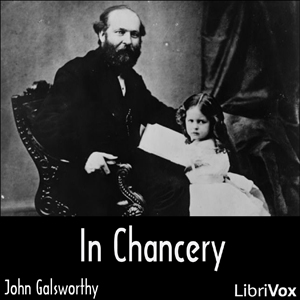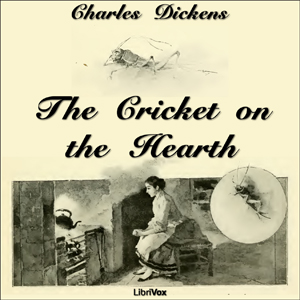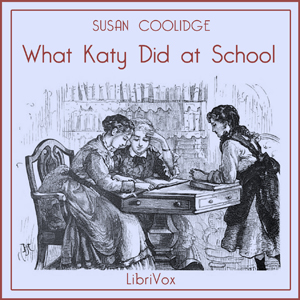Robin Hood is the archetypal English folk hero; a courteous, pious and swashbuckling outlaw of the mediæval era who, in modern versions of the legend, is famous for robbing the rich to feed the poor and fighting against injustice and tyranny. He operates with his "seven score" (140 strong) group of fellow outlawed yeomen – named the Merry Men. He and his band are usually associated with Sherwood Forest, Nottinghamshire.The Victorian era generated its own distinct versions of Robin Hood. The traditional tales were often adapted for children, most notably in Howard Pyle's Merry Adventures of Robin Hood. These versions firmly stamp Robin as a staunch philanthropist, a man who takes from the rich to give to the poor.(Summary from Wikipedia)
22 episodes
Jane Eyre is not your typical romance. It is a story of a woman who struggles with a world in which she doesn't quite fit. Once finished with her schooling, and with no family that really cares of her she strikes out on her own as a governess. Jane Eyre searches for love, someone to care for her, and someone to care for, and finds it in unexpected places. (summary by Kri)
39 episodes
A classic tale of what comes to those whose hearts are hard. In a series of ghostly visits, Scrooge visits his happy past, sees the difficulties of the present, views a bleak future, and in the end amends his mean ways. (Summary written by Kristen McQuillin)
5 episodes
Lucy Maud Montgomery’s classic children’s novel, Anne of Green Gables tells the story of a red headed orphan girl with a personality you can’t help but love. Despite her “tragical” past, Anne’s optimism and imagination have helped her to always see the best in things. Anne’s life changes considerably when she is accidentally adopted by the Cuthberts, a brother and sister who thought they were getting a boy to help out on the farm. The Cuthberts decide Anne will have to be sent back to the orphange but before they know it, she has begun to work her way into their hearts. (Summary by Annie Coleman)
38 episodes
The Country of the Pointed Firs (1896) is considered Jewett’s finest work, described by Henry James as her “beautiful little quantum of achievement.” Despite James’s diminutives, the novel remains a classic. Because it is loosely structured, many critics view the book not as a novel, but a series of sketches; however, its structure is unified through both setting and theme. Jewett herself felt that her strengths as a writer lay not in plot development or dramatic tension, but in character development. Indeed, she determined early in her career to preserve a disappearing way of life, and her novel can be read as a study of the effects of isolation and hardship on the inhabitants who lived in the decaying fishing villages along the Maine coast.
(summary from Gutenberg e-text)
20 episodes
Carol Milford is a liberal, free-spirited young woman, reared in the metropolis of Minneapolis. She marries Will Kennicott, a doctor, who is a small-town boy at heart. When they marry, Will convinces her to live in his home-town of Gopher Prairie, Minnesota. Carol is appalled at the backwardness of Gopher Prairie. But her disdain for the town's physical ugliness and smug conservatism compels her to reform it. (Summary from Wikipedia).
40 episodes

Dickens' last complete novel was published serially 1864-5. It begins with an intriguing fortune offered to John Harmon by his late father, a rich dust contractor, in his will. To receive the money, John must marry a certain Bella Wilfer who he does not know from Eve. He is returning from the exile enforced by his father and confides in a ship's mate who attempts to murder him. The mate gets killed instead, leaving one inconvenient corpse. Because John is considered dead (the body is found with his papers), the money passes to Mr Boffin, old Harmon's foreman. Harmon adopts Bella and John comes into his employ disguised as John Rokesmith. Bella does not fall for John but through kindly Boffin's contrivances learns to hate money and fall for her suitor under his false name. Eventually she learns of his true identity as the Boffins had previously, and the villainous one-legged Silas Wegg's plot to blackmail Mr Boffin is brought to light. There is also a story running behind the main plot about a certain Eugene Wrayburn and his love for Lizzie Hexam, and his rival's attempt to murder him. The two plots are only really connected through the waterside murders but it allows Dickens to indulge in an extremely socially diverse cast of characters. (Summary written by Alan Chant).
68 episodes
Lucy Maud Montgomery’s classic children’s novel, Anne of Green Gables tells the story of a red headed orphan girl with a personality you can’t help but love. Despite her “tragical” past, Anne’s optimism and imagination have helped her to always see the best in things. Anne’s life changes considerably when she is accidentally adopted by the Cuthberts, a brother and sister who thought they were getting a boy to help out on the farm. The Cuthberts decide Anne will have to be sent back to the orphange but before they know it, she has begun to work her way into their hearts. (Summary by Annie Rothenberg)
38 episodes
The ‘Card’ in question is Edward Henry Machin - His mother called him ‘Denry’. This light-hearted story is of his rise from humble beginnings as the son of a washerwoman and sempstress in the last quarter of the nineteenth century, in the pottery towns (which Arnold Bennett christened ‘The Five Towns’) of the English Midlands; how, by his own wits, enterprise and ‘nerve’ he rose to wealth, married bliss and public recognition as the youngest-ever mayor of his home town.
“’And yet,’ demanded Councillor Barlow, ‘what’s he done? What great cause is he identified with?’
‘He’s identified,’ said the speaker, ‘with the great cause of cheering us all up’.” (summary by Andy Minter)
12 episodes
Jude the Obscure is the last of Thomas Hardy's novels, begun as a magazine serial and first published in book form in 1895. Its hero Jude Fawley is a lower-class young man who dreams of becoming a scholar. The two other main characters are his earthy wife, Arabella, and his intellectual cousin, Sue. Themes include class, scholarship, religion, marriage, and the modernization of thought and society. (from Wikipedia)
53 episodes
Like all of Hardy's work, The Return of the Native (1878) is passionate and controversial, with themes and sympathies beyond what a good Victorian would ever admit. A modern and honest novel of chance and choice, faith and infidelities, this dark story asks what is free will and what is fate? What is the true nature of nature, and how do we fit together? Can we fit together?
A tragedy set in the barren land of Edgon Heath. Our heroine, Eustacia, is proud, passionate, cruel, fickle, avaricious, and desperate. She burns every life she touches, never able to find the mad love and exotic world she dreams of. Our supposed hero, Clym, is modest, steady, plain, moral, and dutiful. He is satisfied returning from Paris to the simple comfort of home.
When they come together, the Heath will come apart.
Originally released as five books, in classic tragic form, a sixth, tacking on a 'happy ending', was added by editor and public pressure. (Summary by Marlo Dianne)
49 episodes

Amongst the great popular novelists of the nineteenth century who are still read today, Anthony Trollope stands alongside his contemporary, Charles Dickens. His two series of novels, the political (The Pallisers) and the clerical (The Barsetshire Chronicles) are the best known. This book is the first of the Barsetshire series and was also Trollope’s first really successful novel.
In the mid nineteenth century there were a number of financial scandals in the Church of England including those of Rochester, where the endowments which should have supported the King’s School Canterbury had been diverted to the Dean and Chapter; and of the hospital of St Cross at Winchester where the Rev. Francis North, later the Earl of Guildford, had been appointed to the mastership of the hospital by his father the bishop. The revenues of the hospital were very considerable, the work involved minimal. The scandal soon broke.
Trollope based ‘The Warden’ on the St Cross case, but in the novel the Warden is a kindly, devoted, priest, beloved by all that knew him and is racked by fear that he is accepting money to which he is not entitled. His antagonist is his prospective son-in-law John Bold and his (somewhat unwelcome) ally is one of Trollope’s strongest characters, the Archdeacon of Barchester, Dr. Theophilus Grantly. (summary by Andy Minter)
21 episodes
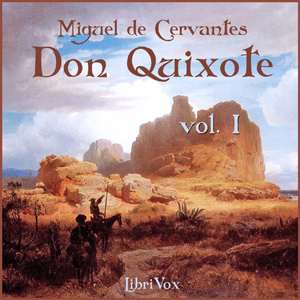
Don Quixote is an early novel written by Spanish author Miguel de Cervantes Saavedra. Cervantes created a fictional origin for the story in the character of the Morisco historian, Cide Hamete Benengeli, whom he claims to have hired to translate the story from an Arabic manuscript he found in Toledo's bedraggled old Jewish quarter.
The protagonist, Alonso Quixano, is a minor landowner who has read so many stories of chivalry that he descends into fantasy and becomes convinced he is a knight errant. Together with his companion Sancho Panza, the self-styled Don Quixote de la Mancha sets out in search of adventures. His "lady" is Dulcinea del Toboso, an imaginary object of his courtly love crafted from a neighbouring farmgirl by the illusion-struck "knight" (her real name is Aldonza Lorenzo, and she is totally unaware of his feelings for her. In addition, she never actually appears in the novel).
Published in two volumes a decade apart, Don Quixote is the most influential work of literature to emerge from the Spanish Golden Age and perhaps the entire Spanish literary canon. As a founding work of modern Western literature, it regularly appears at or near the top of lists of the greatest works of fiction ever published. (Summary from Wikipedia)
36 episodes
The Metamorphosis (in German, Die Verwandlung, "The Transformation") is a novella by Franz Kafka, first published in 1915, and arguably the most famous of his works along with the longer works The Trial and The Castle. The story begins with a traveling salesman, Gregor Samsa, waking to find himself transformed into a giant "monstrous vermin". (Summary from Wikipedia)
3 episodes

Notes from Underground by Fyodor Dostoevsky is a sophisticated novell with extremely hard to comprehend philosophical ideas lying on the border of paranoia, orthodoxal believing of God and psychological researches on human nature. Every sentence sounds like a sort of revelation to an unprepared reader’s mind and causes a deep flashback thoughts which are impossible to get rid of, which also require an immediate solution.
Though it’s hard to define precisely what kind of content presented in novell but one can say it is a sort of impossible mixture of traditional Dostoevsky’s ideas of loneliness, ideas of internal human confilct, ideas of freedom and interhuman relationship.
Reader keeps interest to the story in all time whilst he reads it. Such an effect is achieved by author’s methodical strikes right into reader’s head, so when you read a novell you have an extremely real experience of YOU being THERE, of you experiencing all that awe of facing loneliness and society exile. All that Dostoevsky literator’s power teleports you right into that underground, right into that dirty yellow (when you read Dostoevsky’s book you realize that yellow is a color neither of sun nor of life nor whatever, but it is a color of decay, corruption and something hectic) underground of poor Saint Petersburg’s borough. And you feel like that underground trying to kill you, trying to eliminate of your individuality and make your soul look like a sort of madness, like all that dirty corners and floors of that dirty yellow room. You can feel like you became totaly crazy with that hero’s feelings and thoughts, and you even may not imagine the level of feeling of threaten you can experience… But while you read the story you should better hold at least a tiny thread to reality in order to realize that you are not in a lunatic asylum yet.
If you are not so much frightened you may be encouraged to make a trip to that world of Dostoevsky’s St. Peterburg and encounter with an entire human catastrophe by reading a book or listening to it. (Summary by Yakovlev Valery)
18 episodes
Don Quijote de la Mancha (ortografía y título original —1605—, El ingenioso hidalgo Don Quixote de la Mancha) es una de las obras cumbre de la literatura española y la literatura universal, el libro más traducido después de la Biblia, escrito por Miguel de Cervantes.
La novela consta de dos partes: la primera, El ingenioso hidalgo don Quijote de la Mancha, fue publicada en 1605; la segunda, El ingenioso caballero don Quijote de la Mancha, en 1615.
La primera parte se imprimió en Madrid, en casa de Juan de la Cuesta, a fines de 1604. Salió a la venta en enero de 1605 con numerosas erratas, a causa de la celeridad que imponía el contrato de edición. Esta edición se reimprimió en el mismo año y en el mismo taller, de forma que hay en realidad dos ediciones de 1605 ligeramente distintas. Se sospecha, sin embargo, que existió una novela más corta, que sería una de sus futuras Novelas ejemplares. (Resumen de Wikipedia)
37 episodes
Jane Austen demonstrated her mastery of the epistolary novel genre in Lady Susan, which she wrote in 1795 but never published. Although the primary focus of this short novel is the selfish behavior of Lady Susan as she engages in affairs and searches for suitable husbands for herself and her young daughter, the actual action shares its importance with Austen’s manipulation of her characters' behavior by means of their reactions to the letters that they receive. The heroine adds additional interest by altering the tone of her own letters based on the recipient of the letter. Thus, the character of Lady Susan is developed through many branches as Austen suggests complications of identity and the way in which that identity is based on interaction rather than on solitary constructions of personality. (Summary from Wikipedia)
42 episodes
Rachel Louise Fleckring works for the elderly Mrs Maldon, and although with the woman for only a short time, she is taken into the heart of the family. She falls in love with one of Mrs Maldon's descendents, but along the way, she has to come to terms with the fact that he isn't, perhaps, the perfectly honest man she thought he was. (Summary by Christine)
19 episodes
In this enduring Victorian classic written in 1876, two stories weave in and out of each other: The first is about Gwendolen, one of Eliot's finest creations, who grows from a self-centered young beauty to a thoughtful adult with an expanded vision of the world around her. The second is about Daniel Deronda, adopted son of an aristocratic Englishman who becomes fascinated with Jewish traditions when he meets an ailing Jewish philosopher named Mordecai and his sensitive sister, Mirah. (Summary by Becky Miller)
Alt-BC: Lucy Burgoyne
70 episodes
Night and Day (1919) is a novel by Virginia Woolf. Set in Edwardian London, Night and Day contrasts the daily lives of two friends, Katharine Hilbery and Mary Datchet. The novel examines the relationships between love, marriage, happiness, and success. (Wikipedia)
34 episodes
Aho's first novel Rautatie (Railroad), considered one of his main works, is a story of an elderly couple who hear about railroad first time ever and have a hard time imagining carriages with no horses. They eventually get around to trying it out.Juhani Ahon esikoisromaani vuodelta 1884, Rautatie, on kertomus maaseudun ukosta ja akasta, jotka kuulevat naapurikylälle saapuneesta uudesta ihmeestä, ilman hevosia kulkevasta vaunusta, ja päättävät pitkän jahkailun jälkeen lähteä sitä katsomaan.(Summary by Tuija Aalto)
8 episodes

Considered a change agent in early Gothic romance; oft-referenced in later literary works or paid homage to by such authors as Jane Austen (influential novel ready by her heroine, Catherine Morland, in Northanger Abbey); Edgar Allen Poe (borrowed plot elements for the short story The Oval Portrait); and Sir Walter Scott. - In The Mysteries of Udolpho, one of the most famous and popular gothic novels of the eighteenth century, Ann Radcliffe took a new tack from her predecessors and portrayed her heroine's inner life, creating an atmosphere thick with fear, and providing a gripping plot that continues to thrill readers today. - The Mysteries of Udolpho, set in Europe in the year 1584, is the story of orphan Emily St. Aubert, who finds herself separated from the man she loves and confined within the medieval castle of her aunt's new husband, Montoni, after being forced to travel through France and Italy. Inside the castle, she must cope with an unwanted suitor, Montoni's threats, and the wild imaginings and terrors that threaten to overwhelm her. - The mysterious happenings in the story always have a natural and probable explanation because Radcliffe was a very rational person and did not believe in the supernatural. Radcliffe's strengths in writing were in describing scenery as well as suspense and terror. Many critics have called the work "dreamlike" and "suggestive of the cinematic technique of slow-motion." (Summary by Wikipedia/Michelle Crandall)
78 episodes
The Good Soldier (1915) "... is set just before World War I and chronicles the tragedies of the lives of two seemingly perfect couples. The novel is told using a series of flashbacks in non-chronological order, a literary technique pioneered by Ford. It also makes use of the device of the unreliable narrator, as the main character gradually reveals a version of events that is quite different from what the introduction leads you to believe. The novel was loosely based on two incidents of adultery and on Ford's messy personal life.” (Summary by Wikipedia)
Music in sections 1-5 "Minuet in G flat major and Valse Bluette" by Beethoven.
20 episodes
Candide is a relentless, brutal assault on government, society, religion, education, and, above all, optimism. Dr. Pangloss teaches his young students Candide and Cunegonde that everything in this world is for the best, a sentiment they cling to as the world steps in to teach them otherwise. The novel is brilliant, hilarious, blasphemous. . . and Voltaire never admitted to writing it.
31 episodes
The Portrait of a Lady is a novel by Henry James, first published as a serial in The Atlantic Monthly and Macmillan's Magazine in 1880-1881 and then as a book in 1881. It is the story of a spirited young American woman, Isabel Archer, who "affronts her destiny" and finds it overwhelming. She inherits a large amount of money and subsequently becomes the victim of Machiavellian scheming by two American expatriates. Like many of James's novels, it is set mostly in Europe, notably England and Italy. Generally regarded as the masterpiece of his early phase of writing, this novel reflects James's absorbing interest in the differences between the New World and the Old. It also treats in a profound way the themes of personal freedom, responsibility, betrayal, and sexuality. (Summary from Wikipedia)
28 episodes
Little Lord Fauntleroy is a sentimental children's novel by American (English-born) author Frances Hodgson Burnett, serialized in St. Nicholas Magazine in 1885. It was a runaway hit for the magazine and was separately published in 1886. The book was a commercial success for its author, and its illustrations by Reginal Birch set fashion trends. Little Lord Fauntleroy also set a precedent in copyright law in 1888 when its author won a lawsuit over the rights to theatrical adaptations of the work. (Summary from Wikipedia)
15 episodes
Washington Square is a short novel by Henry James. Originally published in 1880 as a serial in Cornhill Magazine and Harper's New Monthly Magazine, it is a structurally simple tragicomedy that recounts the conflict between a dull but sweet daughter and her brilliant, domineering father. The book is often compared to Jane Austen's work for the clarity and grace of its prose and its intense focus on family relationships. James was hardly a great admirer of Jane Austen, so he might not have regarded the comparison as flattering. In fact, James was not a great fan of Washington Square itself. He tried to read it over for inclusion in the New York Edition of his fiction (1907-1909) but found that he couldn't, and the novel was not included. Other readers, though, have sufficiently enjoyed the book to make it one of the more popular works of the Jamesian canon. (summary from Wikipedia)
35 episodes
The action takes place in London, with excursions to Devon, Yorkshire, and Portsmouth, as we follow the adventures of the eponymous hero. Nicholas is forced to unwelcome employment to help secure support for his widowed mother and his sister from their mercenary relative Ralph, on whose mercy they have been thrown. After many adventures Nicholas finally triumphs over his Uncle, although his success is also tinged with sadness. (Summary by Chris Garbett)
66 episodes
O Pioneers! tells the story of the Bergsons, a family of Swedish immigrants in the farm country near Hanover, Nebraska, (a fictional town near Glenvil) around the turn of the 20th century. The main character, Alexandra Bergson, inherits the family farmland when her father dies, and she devotes her life to making the farm a viable enterprise at a time when other immigrant families are giving up and leaving the prairie. The novel also concerns two romantic relationships - one between Alexandra and family friend Carl Lindstrom, and another between Alexandra's brother Emil and the married Marie Shabata. (Summary from Wikipedia)
30 episodes
A collection of LibriVox volunteers’ favourite chapters. Some were chosen for being the key chapter in a great novel, others for the wonderful clarity with which great ideas are expressed, and still others because the reader did a wonderful job. Whatever the reason they were chosen, we hope they will give you as much pleasure as they did us. (Summary by David Barnes).
10 episodes
Betsy Bobbin encounters many strange and exciting adventures and people in the land of Oz; a side-plot is Queen Ann of Oogaboo's mission to take over Oz. (Summary by Ryan T.)
26 episodes
Anne's House of Dreams is book five in the series, and chronicles Anne's early married life, as she and her childhood sweetheart Gilbert Blythe begin to build their life together. (Summary from Wikipedia)
40 episodes
The second of Crompton's series of 39 books about William Brown, our cheeky 11 year-old protagonist. A hero to some, a dastardly villain to others, this book is structured round a year in his life. Starting with William waking up on Christmas morning and ending with him going to sleep the following Christmas Eve, there are the usual round of misadventures, misunderstanding and general mayhem in between. When a boy like William wakes up under a motto that says "A Busy Day Is A Happy Day" alongside a copy of "Things A Boy Can Do", the chaos is just around the corner. Includes the very first William short story - "Rice Mould". Often dismissed as childrens literature, the first few books of William stories were probably aimed more at an adult audience. They resonate with a distinctly English humour, but there are obvious echoes from 'Tom Sawyer' and 'Huckleberry Finn'.
14 episodes
George Sand (the pen name of Amantine-Lucile-Aurore Dupin 1804-1876) is famous for flaunting the conventions of behavior expected of women of her standing in France at the time and for her numerous romantic liaisons including her long standing affair with Frederic Chopin. The Devil’s Pool (published in 1846 as La Mare au Diable) is one of several short pastoral novels drawn from her childhood experiences in the rural French region of Berri. It tells the story of a young widower, Germain, who, at the insistence of his father-in-law, sets out to remarry so that he will have someone to help raise his three young children. (Summary by J. M. Smallheer)
Une version française est disponible : La mare au diable.
8 episodes
The Rainbow is a 1915 novel by British author D.H. Lawrence. It follows three generations of the Brangwen family, particularly focusing on the sexual dynamics of, and relations between, the characters. (Summary from Wikipedia)
35 episodes
Natives of the distant planet of Kwannon believe that their world is about to end, and in preparing for the apocalypse, may be unnecessarily bringing about their own demise. The planetary government can’t overcome its own bureaucracy to help them, and the military is overwhelmed. Can a single newsman change the course of a whole people, and save their world? (by Mark Nelson)
4 episodes
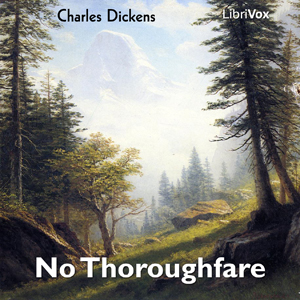
Two boys from the Foundling Hospital are given the same name, with disastrous consequences in adulthood. Two associates, wishing to right the wrong, are commissioned to find a missing heir. Their quest takes them from fungous wine cellars in the City of London to the sunshine of the Mediterranean—across the Alps in winter. Danger and treachery would prevail were it not for the courage of the heroine and the faithful company servant. The story contains crafted descriptions, well-drawn and diverse characters, eerie and exotic backgrounds, mystery, semi-concealed identities, brinkmanship with death, romance, the eventual triumph of Good over Evil, and many other elements expected in classic Dickens. First published in 1867 there are thematic parallels with other books from Dickens' mature writings, including Little Dorrit (1857) and especially Our Mutual Friend (1865). The Listener will decide if this story yields insights into The Mystery of Edwin Drood (unfinished 1870). Wilkie Collins collaborated with Charles Dickens to produce this ‘Christmas’ book and the stage play of the same name. In the book Collins assisted in Act 1 and Act 4; Collins scripted most of the stage play with Dickens’ assistance. If this book were released today it would be splashed "THE BOOK OF THE FILM". - Summary by Alan Chant.
13 episodes
An autobiographical short story written in 1898 and included as the first story in the 1902 volume Youth, a Narrative, and Two Other Stories. This volume also includes Heart of Darkness and The End of the Tether, which are concerned with maturity and old age, respectively. "Youth" is narrated by Charles Marlow who is also the narrator of Heart of Darkness, Lord Jim and Chance. Youth depicts his first journey to the East." (summary from wikipedia)
3 episodes
Boswell's Life of Samuel Johnson is widely considered to be the greatest English-language biography ever written. It was revolutionary in its efforts to represent Johnson as he was, celebrating his flaws as well as his genius, and in Boswell's decision to represent Johnson primarily by quoting his writings and relating personal anecdotes rather than relying on matters of public record. From the time of its publication till now, The Life of Johnson has been one of the most popular and influential books ever written. (Summary by Kirsten Ferreri.) N.B. This recording does not include the Preface, Appendices and Footnotes.
32 episodes
'The Forsyte Saga' is the story of a wealthy London family stretching from the eighteen-eighties until the nineteen-twenties. The Man of Property is the first book in the saga. The 'man of property' of the title is Soames Forsyte, a partner in the family law firm. He is married to Irene but the marriage is not happy and during the book she falls in love with another man.
Another branch of the family is headed by 'Old Jolyon,' estranged from his bohemian artist son 'Young Jolyon' and the story tells of their rapprochement and of Young Jolyon's daughter June who is engaged to an architect Philip Bosinney.
For those familiar with the Forsytes, this book takes us up to the night when Soames exercises his 'rights' and to the death of Bosinney. (Summary by Andy Minter)
33 episodes
Lamb used Homer's Odyssey as the basis for the re-telling of the story of Ulysses's journey back from Troy to his own kingdom of Ithaca. Not a direct translation and deemed modern in its time, Lamb states in the preface that, "I have gained a rapidity to the narration which I hope will make it more attractive and give it more the air of a romance to young readers". (Summary by Rebecca)
11 episodes
The book is about three families in England at the beginning of the twentieth century. The three families represent different gradations of the Edwardian middle class: the Wilcoxes, who are rich capitalists with a fortune made in the Colonies; the half-German Schlegel siblings (Margaret, Tibby, and Helen), who represent the intellectual bourgeoisie and have a lot in common with the real-life Bloomsbury Group; and the Basts, a couple who are struggling members of the lower-middle class. The Schlegel sisters try to help the poor Basts and try to make the Wilcoxes less prejudiced. The motto of the book is "Only connect..."
44 episodes

Don Quixote is an early novel written by Spanish author Miguel de Cervantes Saavedra. Cervantes created a fictional origin for the story in the character of the Morisco historian, Cide Hamete Benengeli, whom he claims to have hired to translate the story from an Arabic manuscript he found in Toledo's bedraggled old Jewish quarter.
The protagonist, Alonso Quixano, is a minor landowner who has read so many stories of chivalry that he descends into fantasy and becomes convinced he is a knight errant. Together with his companion Sancho Panza, the self-styled Don Quixote de la Mancha sets out in search of adventures. His "lady" is Dulcinea del Toboso, an imaginary object of his courtly love crafted from a neighbouring farmgirl by the illusion-struck "knight" (her real name is Aldonza Lorenzo, and she is totally unaware of his feelings for her. In addition, she never actually appears in the novel).
Published in two volumes a decade apart, Don Quixote is the most influential work of literature to emerge from the Spanish Golden Age and perhaps the entire Spanish literary canon. As a founding work of modern Western literature, it regularly appears at or near the top of lists of the greatest works of fiction ever published. (Summary from Wikipedia)
43 episodes
Far from the Madding Crowd (1874) is Thomas Hardy's fourth novel and offers in ample measure the details of English rural life that Hardy so relished. Hardy's growing taste for tragedy is also evident in the novel. It first appeared, anonymously, as a monthly magazine serial, where it gained a wide readership and critical acclaim. According to Virginia Woolf, "The subject was right; the method was right; the poet and the countryman, the sensual man, the sombre reflective man, the man of learning, all enlisted to produce a book which . . . must hold its place among the great English novels." The book is often regarded as an early piece of feminist literature, since it features an independent woman with the courage to defy convention by running a farm herself. Although Bathsheba's passionate nature leads her into serious errors of judgment, Hardy endows her with sufficient resilience, intelligence, and good luck to overcome her youthful folly.
57 episodes
Manasseh da Costa, protagonist of this hilarious novel, is a schnorrer (beggar) who lives on the charitable contributions of the Jews of late 18th-century London. Manasseh is far from being a humble panhandler for, as every schnorrer knows, supporting the poor is a commandment from God (a mitzvah) not just a favour. And as the descendant of Portuguese Jews who had lived in England for many generations, Manasseh is the social superior of those newly arrived from Eastern Europe (Tedesco)—even his wealthy ‘patron’ Joseph Grobstock. The book concludes as the ever-audacious Manasseh strikes a blow for tolerance and understanding—while helping himself along the way. (Summary by Adrian Praetzellis)
Alt-BC: Lucy Burgoyne
6 episodes
'The Forsyte Saga' is the story of a wealthy London family stretching from the eighteen-eighties until the nineteen-twenties. In Chancery is the second book in the saga. Five years have passed since Irene left Soames and the death of Bosinney. Old Jolyon meets Irene and is enchanted by her. At his death he leaves her a legacy sufficient for her to live an independent life in Paris.
Soames who is desperate for a son, attempts to effect a rapprochement but is rejected by her. Meanwhile Young Jolyon, now a widower,who is Irene’s trustee falls in love with her.
Soames suspects Young Jolyon and Irene of adultery and sues for divorce. His action is successful. Young Jolyon and Irene marry. She bears him a son, John. Soames remarries. His wife Annette bears him a daughter, Fleur. (Summary by Andy Minter)
46 episodes
John Peerybingle, a carrier, lives with his wife Dot (who is much younger than he), their baby, their nanny Tilly Slowboy, and a mysterious lodger. A cricket constantly chirps on the hearth and acts as a guardian angel to the family, at one point assuming a human voice to warn John that his suspicions that Dot is having an affair with the lodger are wrong.The life of the Peerybingles frequently intersects with that of Caleb Plummer, a poor toymaker employed by the miser Mr. Tackleton. Caleb has a blind daughter Bertha and a son Edward, who travelled to South America and seemingly never returned. Tackleton is now on the eve of marrying Edward's sweetheart, May.In the end, the lodger is revealed to be none other than Edward. Tackleton's heart is melted by the Christmas season, like Ebeneezer Scrooge, and surrenders May to marry her true love. It is suggested ambiguously that Bertha regains her sight at the end. (Wikipedia)
10 episodes
The continuing story of Katy Carr, recounting the time she spent at boarding school with her sister Clover. (Summary by Karen Savage)
13 episodes
The novel picks up where Tarzan of the Apes left off. The ape man, feeling rootless in the wake of his noble sacrifice of his prospects of wedding Jane Porter, leaves America for Europe to visit his friend Paul d'Arnot. On the ship he becomes embroiled in the affairs of Countess Olga de Coude, her husband, Count Raoul de Coude, and two shady characters attempting to prey on them, Nikolas Rokoff and his henchman Alexis Paulvitch. (Summary from Wikipedia)
26 episodes
A collection of LibriVox volunteers’ favourite chapters. Some were chosen for being the key chapter in a great novel, others for the wonderful clarity with which great ideas are expressed, and still others because the reader did a wonderful job. Whatever the reason they were chosen, we hope they will give you as much pleasure as they did us. (Summary by David Barnes).
10 episodes







